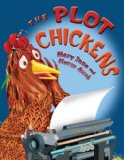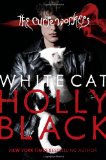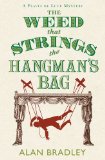Review of The Plot Chickens, by Mary Jane and Herm Auch
by Mary Jane and Herm Auch
Holiday House, New York, 2009. 32 pages.
There are many books out there where writers try to tell children how to be a writer. Most fall a little flat as far as the story goes. But The Plot Chickens makes me laugh. Perhaps it’s my over-fondness for puns, but this is probably the book I’d reach for if I were trying to teach a class of elementary school students about being a writer.
Henrietta loves books and decides to write one herself. All the other hens are in on the process. I love the way they first jostle to be the main character, but then pull back when Henrietta gets to Rule Three: “Give your character a problem.”
The nice basic rules listed give lots of room for creativity. I like Henrietta’s story, The Perils of Maxine: It demonstrates that the rules do make a better book, and ends up as a story that a child could write.
But the authors are realistic about its chances of getting published. Henrietta sends it off and, “Many, many, many months later, the publisher sent a rejection letter.” Henrietta self-publishes the book.
My favorite pun is when the librarian tells her she should get a review, so Henrietta sends the book to The Corn Book Magazine. (Not that The Horn Book Magazine would review a self-published book with little merit, but I can believe that The Corn Book Magazine might.) The reviewer says “Henrietta lays an egg with her first book. We hope this is her last book. The Perils of Maxine shows why chickens shouldn’t EVER write.”
I like the way the book reveals the emotional turmoil of being a writer when Henrietta takes the reviewer’s words to heart. But the children at her local library story hour vote it the best book of the year. Sometimes critics can hate a book, but you can still reach children. (Okay, so what if the local children hate it, too? But this does make a fun story….)
This is a silly way to give children a glimpse of the writing process and the life of a writer.
Find this review on Sonderbooks at: www.sonderbooks.com/Picture_Books/plot_chickens.html
Disclosure: I am an Amazon Affiliate, and will earn a small percentage if you order a book on Amazon after clicking through from my site.
Source: This review is based on a library book from the Fairfax County Public Library.


